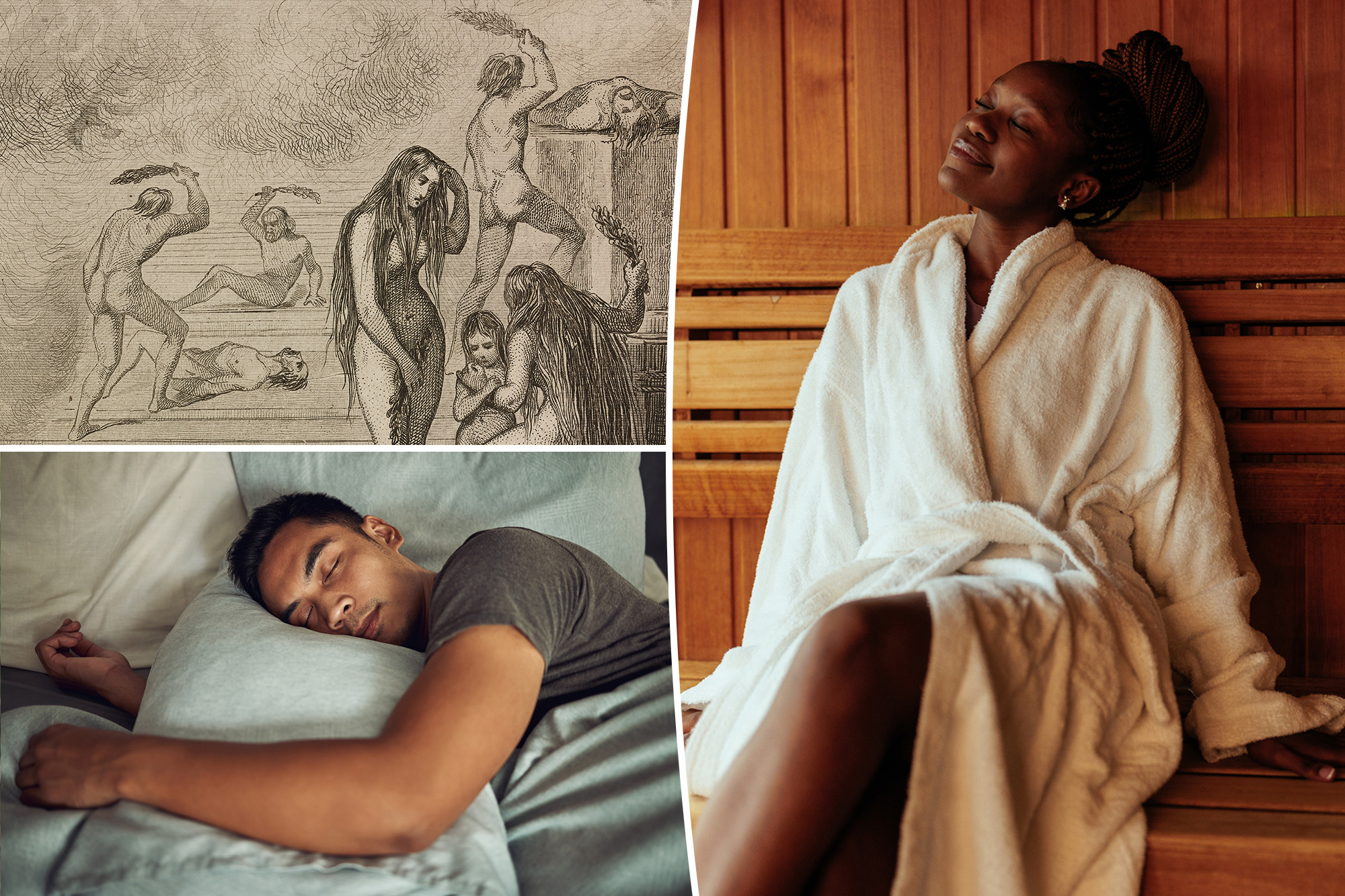Schvitz and Shine.
The bathrooms are splashing these days, with the beginners of these relaxation paradises that help reduce stress, soothe muscles and help their sensation.
But this is not your average spa day.
Like giving spin classes, the bathrooms encourage you to work for your well -being, in this case, sweating it in a sauna, and then shocking your body jumping to a cold cold.
The art of alternating between heat and cold, also known as contrast therapy, produces many health benefits and, although it may be the most recent welfare trend, is actually an ancient remedy.
“Contrast Therapy is far from new: it has been practiced for centuries,” Dr. Demian Hany, The CEO of Biospel and Pain Care Clinics co -founder told The Post. “Historical records show that soldiers used it after the battle to speed up recovery and restore energy.”
It then shows how to practice yourself and, if you do not want to go out in a bathroom, we also have the skinny on how to do it at home.
How does contrast therapy work?
“Contrast Therapy It involves alternating exposure to hot and cold temperatures, “Dr. Steven Quay, founder of the Atossa Therapeutics biopharmaceutical company, told The Post.
In Finnish traditional culture, it usually involves a sauna session, ideally immersed in a cold ice lake, while the Japanese experience focuses on hot baths and ice baths. In any way, the underlying physiological mechanisms are the same.
“The basic principle is to alternate between the cold, to promote vasoconstriction, which affects the blood vessels and the heat, promoting vasodilation, which extends them,” said Demian. “This dynamic process increases circulation, accelerates muscle recovery and reduces pain by eliminating metabolic waste and reducing inflammation.”
It also makes you feel like a golden god, here is why.
What are the health benefits of contrast therapy?
According to Quay, equally reviewed investigation suggests that contrast therapy has several benefits, including:
- Powered parasympathetic nervous activity, which promotes relaxation
- Improved circulation and blood flow
- Reduction of muscle pain and inflammation
- Improved recovery after exercise
- Best thermoregulation, which helps the body to maintain the inner temperature of the nucleus
Is there any scientific evidence behind?
Although some of the advantages are anecdotal, there are studies that show that contrast therapy can help blood circulation, relaxation and sleep, according to both experts.
“Vasoconstriction and alternating vasodilation can stimulate vascular response and improve peripheral blood flow,” said Quay.
“Heat therapy (for example, sauna, warm baths) is known for reducing stress hormones as cortisol. Exposure to cold (for example, cold showers) can activate the parasympathetic nervous system later, helping relaxation,” said Demian.
“Exposure to heat before bed can help lower the body temperature of the nucleus, which is related to a better sleep. Exposure to cold can also improve sleep by reducing inflammation.”
Is it “healthier” than to swim only in the pool/whirlpool?
While cooling in a pool or whirlpool is also undeniably relaxing, you will get a little more gain from pain when you alternate from extreme heat to cold.
“Contrast Therapy can be more effective therapeutically that the hydromassage horns or the passive pools for their dynamic thermal stimulation, “said Quay.
Do you burn many calories?
Between sweating and jumping, it is to think that you are burning as many calories as a hot yoga class, especially because it is not surprising later.
Unfortunately not so much.
“A very small amount of calories will be burned, but nothing significant,” said Demian. “Can cause stomach contraction and relaxation that stimulates appetite.”
How can you practice at home contrast therapy?
Depending on the place where you live and what time do you go, a day pass to a bathroom can cost from 50 to $ 100.
And, while saunas at home and cold immersion horns – or, better, access to the lake – are becoming more popular, most of us do not have this type of money.
The good news is that all you need to practice contrast therapy – and get its benefits – is a bathtub that works.
To make DIY, Quay recommends taking a hot shower of three to five minutes (~ 104 Fahrenheit), followed by 30-60 seconds of cold water (~ 50 Fahrenheit), repeating three four cycles.
Quay notes that people with cardiovascular disease should prevent contrast therapy without medical supervision.
Pregnant women, people under the influence of alcohol or drugs, or those with certain medical conditions such as epilepsy, asthma, heart problems or serious infections also need to consult a doctor before trying the contrast therapy.
#centenary #practice #improves #sleep #reduces #stress #soothes #sore #muscles #home
Image Source : nypost.com
